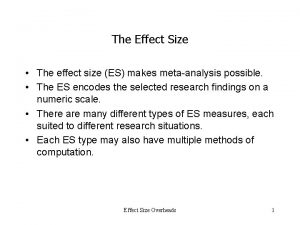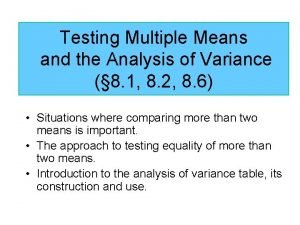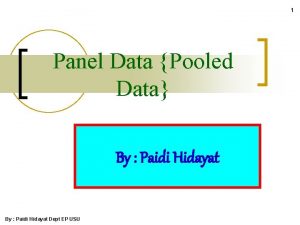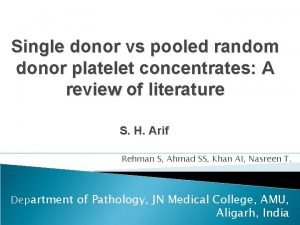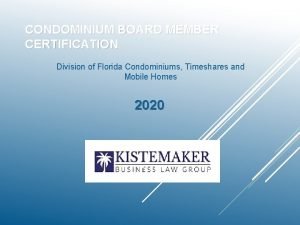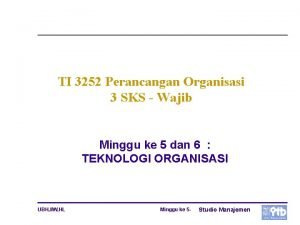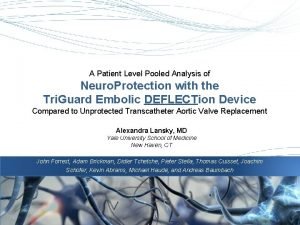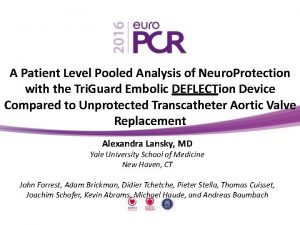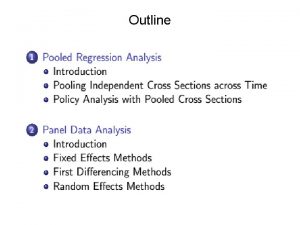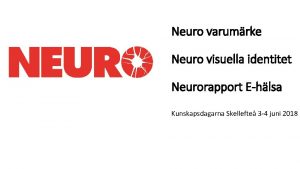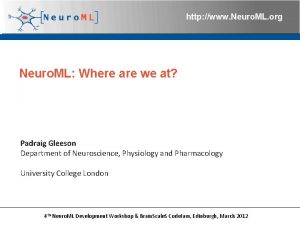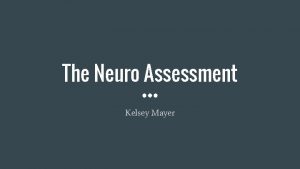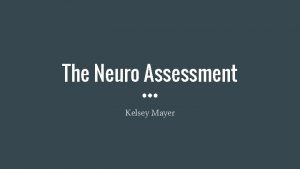A Patient Level Pooled Analysis of Neuro Protection










- Slides: 10

A Patient Level Pooled Analysis of Neuro. Protection with the Tri. Guard Embolic DEFLECTion Device Compared to Unprotected Transcatheter Aortic Valve Replacement Alexandra Lansky, MD Yale University School of Medicine New Haven, CT John Forrest, Adam Brickman, Didier Tchetche, Pieter Stella, Thomas Cuisset, Joachim Schofer, Kevin Abrams, Michael Haude, and Andreas Baumbach

Speaker's name: Alexandra Lansky I do not have any potential conflict of interest X I have the following potential conflicts of interest to report: Honorarium: Institutional grant/research support: Keystone Heart Consultant: Employment in industry: Owner of a healthcare company: Stockholder of a healthcare company: Other(s):

Clinical Stroke after TAVR • Neurologist identified deficits with + Brain MRI lesions • Stroke range is 15 -28% • 1. 5 -6% at 30 days in recent RCTs • Confer 3 - to 9 -fold increased risk of mortality 30% 25% 30 -day stroke rates in recent RCTs % 7 6 5 5, 8 4, 6 4 4 3 2 1 0 5 2, 6 1, 6 20% 5, 9 15% 4 3 2, 6 2 28% Stroke is underreported in trials 10% 5% 0% *AP Kappetein et al. EHJ (2012) 33, 2403– 2418; **Sacco et al. Stroke. 2013; 44: 2064 -2089 17% 15%

Tri. Guard Device • Single-wire nitinol frame and mesh filter with pore size of 130μm designed to deflect cerebral emboli during TAVI while allowing maximal blood flow • Positioned across all 3 cerebral vessels and maintained by a stabilizer in the innominate • Delivered via 9 Fr sheath from the femoral artery

Objective and Methods • Objectives: To evaluate the safety and efficacy of the Tri. Guard device as an adjunct to TAVI compared to no protection in an expanded patient level pooled analysis of 3 prospective clinical trials • Methods: A total of 142 patients (Tri. Guard N=59 vs Controls N=83). This per-treatment analysis includes all TG patients with adjudicated complete cerebral coverage. Trials included: – DEFLECT I: A registry of 23 patients with Tri. Guard – DEFLECT III: A randomized trial of 36 patients with Tri. Guard and 44 Controls – Neuro. TAVR: A registry of 44 control patients • Endpoints: • MACCE: all death, stroke, bleeding, AKI, Vasc Complications • Stroke: VARC 2 defined * and AHA/ASA defined: ** • CNS infarction: Number an Volume New MRI lesions • Worsening NIHSS and cognitive function (Mo. CA) *AP Kappetein et al. EHJ (2012) 33, 2403– 2418; **Sacco et al. Stroke. 2013; 44: 2064 -2089

Procedures & Assessments All 3 trials used same methodology, definitions, MRI Core Lab and CEC Screening Post-Procedure 4± 2 days NIHSS m. RS Neurocog* TAVR ± Tri. Guard 30 days DW-MRI NIHSS m. RS Neurocog* *Neurocognitive test battery includes the Montreal Cognitive Assessment (Mo. CA) and computerized Cog. State Research Test. Baseline and 30 -day evaluations include supplemental Digit Symbol Substitution, Trailmaking, and Word Fluency Tests.

Baseline Demographics ITT population Tri. Guard N=59 Controls N=83 P value Age (y) ± SD Male STS Score Euro. SCORE II NYHA Class III or IV (%) LVEF % A Fib on admission CKD COPD O 2 Dependent 82. 6 ± 6. 7 34% 4. 7 5. 3 82. 8 ± 6. 4 58% 7. 4 6. 8 0. 94 0. 005 0. 48 0. 78 41. 1% 56 ± 12 22. 0% 20. 3% 23. 7% 5. 6% 61. 0% 55 ± 13 36% 21. 7% 32. 9% 2. 5% 0. 13 0. 72 0. 36 0. 85 0. 24 0. 4 Previous stroke/TIA 8. 5% 16. 9% 0. 15 Frailty 11. 9% 18. 4% 0. 42 Porcelain Aorta BAV 5. 6% 73% 2. 5% 82% 0. 41 0. 21

DW-MRI Findings Incidence of CNS Infarction Number of Lesions Total DWI volume mm 3 [IQR] Average DWI volume mm 3 IQR] Total Volume None Small (1 -50 mm 3) Medium (>50 -150 mm 3) Large (>150 mm 3) Tri. Guard N=59 Controls N=83 P value 72% 3 [0 -8] 101. 4 [0 -337] 25 [0 -8] 92% 4. 5 [2 -10] 174 [67 -575] 43 [18 -67] 0. 008 0. 07 0. 04 0. 07 27. 9% 14% 44% 8. 3% 10% 28% 53% 0. 008 0. 54 0. 08 0. 36

Tri. Guard Pooled Analysis: In hospital Results MACCE: 18. 2%TG vs 24. 1%Control, p=0. 44 % 100 90 80 60 50 40 30 20 10 0 P=0. 008 92 72 P=0. 03 59 P=0. 38 P=0. 001 P=0. 4 0 1, 2 VARC 2 Disabling stroke 28 P=0. 05 0 6 VARC 2 Stroke 35, 0 37 19 0 NIHSS TG MOCA Control NIHSS or Mo. CA DW-MRI Lesion

Conclusions • Neuroprotection with Tri. Guard – Is safe – Associated with reduced Cerebral Infarction : • 40% reduction in volume of brain lesions • 28% freedom from any cerebral ischemic lesions – Associated with reduced stroke: • Reduction in VARC defined Stroke (p=0. 05) • Reduction in new neurologic deficits (0% vs 19%, p=0. 001) postprocedure by systematic NIHSS assessment and bain imaging • The pivotal REFLECT RCT is designed to confirm our results.

